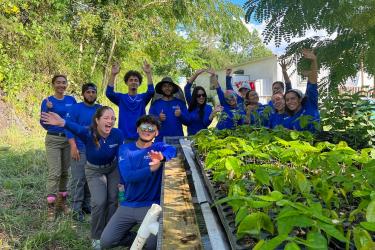
Gulf Corps provides jobs and skills training for local workers.
The coastal habitats of the Gulf of Mexico were negatively impacted by the Deepwater Horizon oil spill. Beaches, marshes, oyster reefs, and other habitats were exposed to the oil, affecting the plants and wildlife living in those areas. NOAA is committed to restoring these habitats following the spill. In December 2016, announced the availability of up to $7 million grant funding provided under the RESTORE Act to implement a “GulfCorps” program that will contribute to ecological restoration across the Gulf states.
Through this funding opportunity, NOAA sought applications from non-federal partners that would recruit, train, and employ Conservation Corps workers to work on habitat restoration projects and develop skills in support of long-term Gulf coast restoration. The goal of the program is to provide labor support to projects listed on the RESTORE Act Funded Priorities Lists, projects funded through Deepwater Horizon oil spill settlements, and other funded federal or state projects.
In June 2017, NOAA announced that The Nature Conservancy was selected to receive $7 million from this grant to establish a GulfCorps program. The GulfCorps will provide labor for on-the-ground restoration projects benefiting coastal habitats and water quality. These projects will provide short-term employment for local citizens, as well as skills training and experience in restoration-based jobs. They will also support sustainable fisheries and contribute to the recovery of protected resources by restoring habitat for fish to reproduce and develop.
We expect to support projects such as invasive species removal, shoreline stabilization, marsh and riparian re-vegetation, shellfish restoration, and hydrologic improvements.

